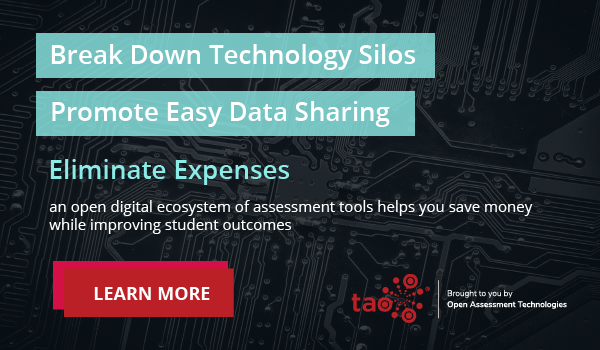Many students play video games for fun in their free time. Gaming, while not traditionally considered beneficial to education, is actually a very effective way for students and young people to learn. When you break down gaming it is clear why this is the case, gamers need to repeatedly work towards completing a task. They use facts and learning from earlier parts of the game to advance in levels and move past difficulties, and they persevere until the game is completed. In short, it is a great way to learn.
For teachers, this means that we can leverage gaming and gaming models to teach difficult content in context. By putting learning into a gaming-like medium, students are more likely to engage deeply with content and work through difficulties until the end of the game, or assessment. Knowing where to begin when gamifying education can be daunting, however, computer-based assessment platforms like TAO can help to lead teachers through the process.
Student Engagement & Gamified Learning
Student engagement is about more than task completion and obedient behavior – at its core, engagement is all about motivation. Highly engaged students learn because they are interested in the material and curious about finding out more. Unfortunately, this is not always how lessons or assessments work out.
More often than not, teachers teach a large number of lessons in a unit before giving a cumulative test that gauges understanding. The problem with this model is that there is minimal context for the learning throughout the unit and students are only given one opportunity to succeed at the end. Gamification changes that.
By gamifying lessons and assessments, teachers give students multiple opportunities to use learning in context early on in the learning process. When students can use skills in a context that is where the true demonstration of knowledge takes place. This learning is not only beneficial for learning content, but it is also instrumental in developing 21st-century and digital literacy skills.
Encourage Creativity and Utilize 21st-Century Skills
While engaging students during assessment and learning is a critical starting point for growing student skills, engagement alone is not the only benefit of using a gamified assessment. To succeed in the modern world, students need to be able to think creatively and flexibly and solve problems that have no easy or straightforward answer. This can be difficult to achieve using traditional testing strategies and lesson planning, which tend to lend themselves more to drilling skills through repetition rather than implementing skills in real-world scenarios.
Through gamification in learning and assessment, teachers give students a tremendous amount of choices and require students to make decisions to complete tasks. Giving students decision-making power and allowing them to leverage technology-based tools to discover answers or solve problems means that students are practicing and authentically implementing 21st-century skills.
Challenges to Implementing Gamified Assessment Solutions (& How to Overcome Them)
While gamified assessment is effective, it can be challenging for teachers to implement it on their own. Some of the challenges that come with gamified education are:
– More work upfront – gamified learning solutions require upfront planning because teachers are setting up games to facilitate learning. This means they need to have the entire unit and learning targets set up on day one.
– Customization can feel overwhelming – because gamified learning and assessments are not one size fits all, teachers will need to customize the assessment to meet student needs.
– Not going overboard – When developing a gamified learning experience it is important to keep focused on the overall learning objectives and stay on track. There are many bells and whistles that can sometimes become distracting if added in too heavily.
– Difficult to create – creating a gamified assessment or learning task can be difficult to do without experience.
Although there are challenges to creating an online gamified assessment or lesson, there are resources that teachers and school districts can use to make gamified learning a reality. By leveraging open standards-based solutions like TAO, schools can easily gamify assessments using Portable Custom Interactions that enable test-takers to engage with rich simulations. And because TAO provides a full platform for the development and implementation of gamified learning, teachers can create, manage, and customize learning experiences for students all in one place, making gamification of learning simple and effective.
—
Gamification in assessment is a buzzing topic at the forefront of learning and education today. With students already being so well versed in gaming and with the endlessly customizable nature of game-based assessment, gamification is a great way to keep students engaged in learning and assess their skills in context.
While gamification of learning is effective, it can be challenging to implement for teachers who are accustomed to more traditional methods. This is where Open Assessment Technologies can help. OAT offers solutions for learning, including developing Portable Custom Interaction assessment items where students can explore and learn digitally to give a gamified learning experience. To learn more about OAT and the full suite of education solutions get in touch here.


